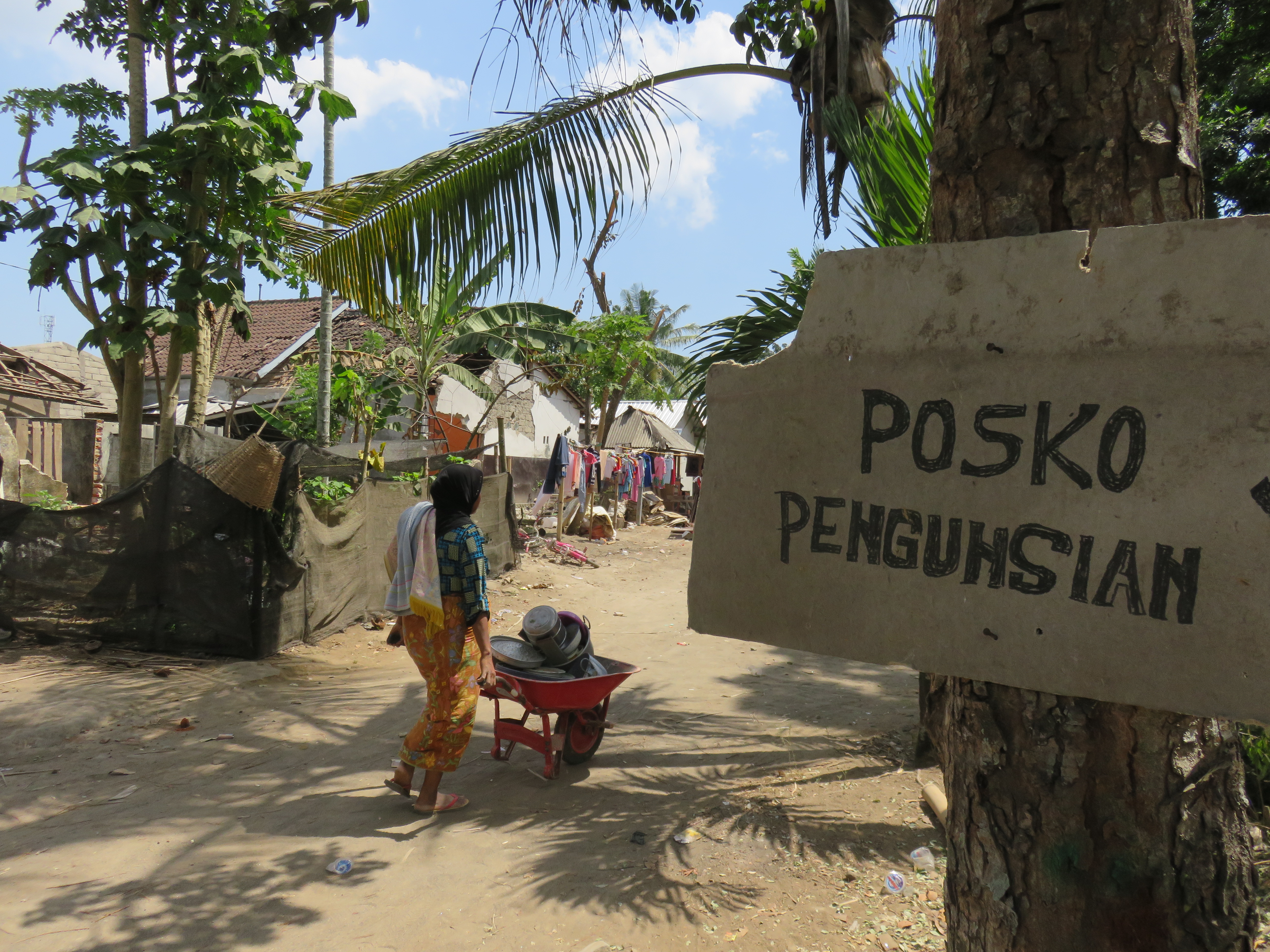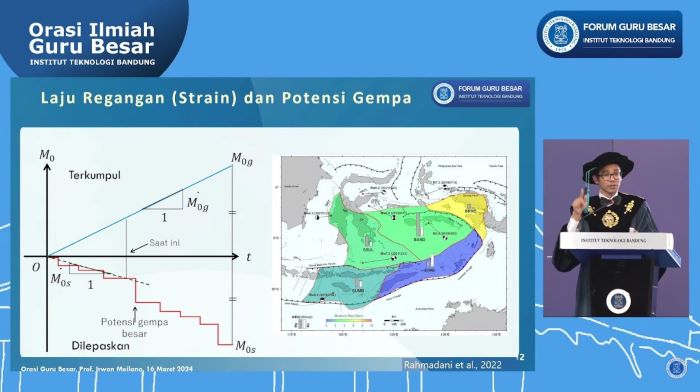PSA ITB Successfully Performs Post-Earthquake Rehabilitation and Reconstruction in Montok Village, North Lombok
By Adi Permana
Editor Adi Permana

BANDUNG, itb.ac.id – Post-disaster rehabilitation and reconstruction in affected areas is an important thing to do in order to support normal life again. The Lombok earthquake that occurred on 29 July 2018 caused almost all buildings in the village of Montong, North Lombok, to suffer moderate to severe damage.
The results of the field survey showed that most of the victims died in the village as a result of being hit by the earthquake debris and the difficulty of evacuating themselves due to the crowded conditions of the settlements with narrow alleys and some dead ends.
In 2019, ITB Agrarian Study Center team (ASC) consisting of Dr.rer.pol. Rizqi Abdulharis, Dr. Alfita Puspa Handayani, Dr. Irwan Meilano, and Ivan Akbar, B.Sc., M.T. conducted an analysis of the causes of the unfinished administration that hindered the rehabilitation and reconstruction process in the village. At least there are two causes found, which are there is no planning for the use of the flats in Montong village in accordance with the characteristics and there is no institution that is directly involved in assisting the implementation of administrative preparation and the implementation of rehabilitation and reconstruction. Therefore, ASC ITB provided several alternative approaches for carrying out rehabilitation and reconstruction in the village.
Soil consolidation is an alternative solution given, land consolidation is an activity to optimize land use in terms of utilization, improvement, productivity, and environmental conservation. Ways to consolidate land by structuring, shifting, exchanging, splitting, merging, deleting, and changing the location of land parcels (plots) which is enhanced by the construction of public facilities such as roads, green open spaces, and so on.
In contrast to land acquisition, land consolidation prioritizes optimizing conditions according to what the community is running. According to Housing and Resettlement Area Law (Law No. 1/2011), land consolidations can be performed if at least 60% of the landowners whose land covers at least 60% of the consolidated land area gave their approval.
For people who are just affected by disaster, handing over their land for consolidation is not an easy matter.
Therefore, an alternative ethnographic approach was taken to overcome this. The ethnographic approach is carried out in an effort to build effective communication with the entire community in order to develop a land consolidation design that is in accordance with local wisdom in traditional settlement patterns. This approach has proven successful, communication can run more effectively through deliberation involving traditional and religious leaders.
In addition to effective communication with the community, in conducting consolidation there are two other important parts that must be fulfilled, namely ensuring relocation locations for special areas that are in the geological disaster hazard zone and design of safe community settlement patterns with easy access roads. Soil consolidation for structuring disaster areas can be done with other alternative solutions, which is Geospatial Information Analysis.
In the end, land consolidation became a long and difficult process for the parties involved. The ability to implement an ethnographic approach to geospatial data acquisition will result in a post-disaster land consolidation model that is proven to be able to minimize the emergence of conflicts in the field.
After analyzing the causes of the delay in the administrative process, Dr. Rizqi and his team carried out the rehabilitation and reconstruction process with several solution approaches, namely soil consolidation, ethnography, and analysis of geospatial information. The three approaches are mutually supportive and interrelated.
Source: Press Release LPPM ITB
Reporter: Diah Rachmawati (Teknik Industri, 2016)
Translator: Aghisna Syifa Rahmani (TPB SITHS 2020)

.jpg)
.png)
.jpg)
.jpg)
.jpg)

